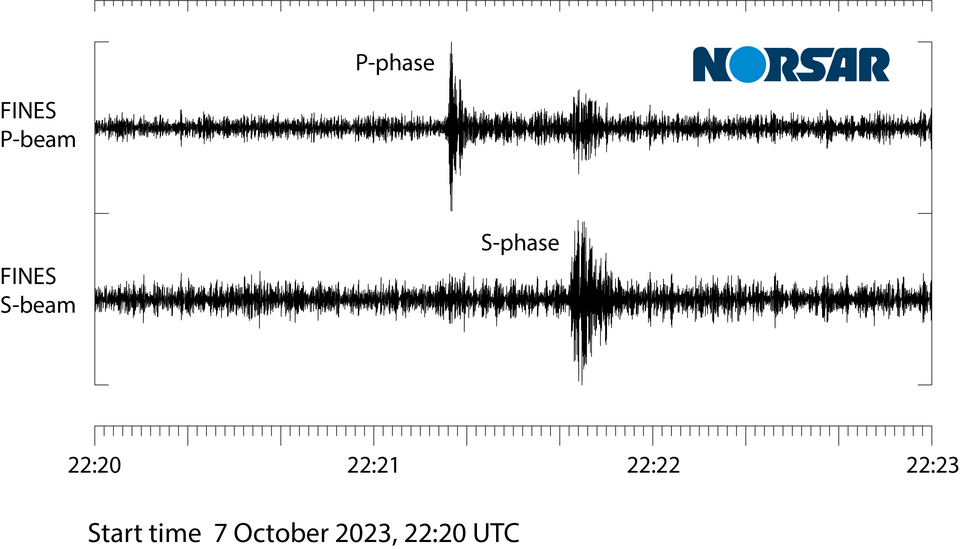Seismic signal detected in the vicinity of the Balticconnector gas pipeline
NORSAR has recorded seismic signals near the Balticconnector gas pipeline in the Baltic Sea. The signals indicate a possible explosion at around 01:20, local time in Finland, 8 October 2023.
Seismologists at NORSAR have analyzed data from the Finnish seismic network, including a group of sensors called the FINES seismic array. Data shows a clear event at 01:20, Finnish time, which corresponds with the approximate time that the media reports a drop in pressure in the pipeline. We are unable to determine if the event was caused by a suden release of gas under high pressure, due to rupturing of the pipeiline, or from the detonation of an explosive.
The Figure below shows clear seismic beam signals at the FINES array in southern Finland. The calculated beam points to a signal origin SW of the array.

The event has been located approximately 40 km north of Paldiski, Estonia close to where the Baltic Connector pipeline crosses the Nord Stream 1 pipeline. The magnitude of the event has been estimated at 1.0 on the Richter scale, which is much lower than the Nord Stream explosion detected in September 2022.

Common questions
Why was the event not found earlier?
The event was relatively small – it has a magnitude of approximately 1. We were able to find it by first looking at the FINES seismic array (part of the International Monitoring System for the Comprehensive Nuclear Test Ban Treaty). NORSAR have expertise in seismic array processing, which can be used for identifying weak signals. We have discussed our findings with other seismological institutes from the Nordics where there is broad agreement with the findings.
What does the waveform show?
The figure shows the P-wave and S-wave signals recorded at a seismic array (called ‘FINES’) in Finland. The P-wave and S-wave are different types of seismic waves, which travel at different speeds. The P-wave is the first to arrive and the S-wave is the second to arrive. We can use these different waves to estimate a location, origin time and size of the event. Using a seismic array such as FINES, which is a group of multiple sensors placed in a certain configuration, we can enhance signals from different locations for improved detection. The two 'beams' therefore show the enhanced P-wave and S-wave signals for our estimated location.
Was it definitely an explosion?
There was a sudden energy release that caused an explosive signal. We cannot be sure of the exact cause – for example, sudden rupturing of the pipeline, or detonation of an explosive charge.
How large was the event?
The seismic event had a magnitude of approximately 1 on the Richter scale. We are still estimating what this means in terms of an explosive yield but we are confident that it is equivalent to less than 100 kg TNT. The sudden release of pressure on the pipeline contributes to this size estimate and there are many unknowns in this estimation.
